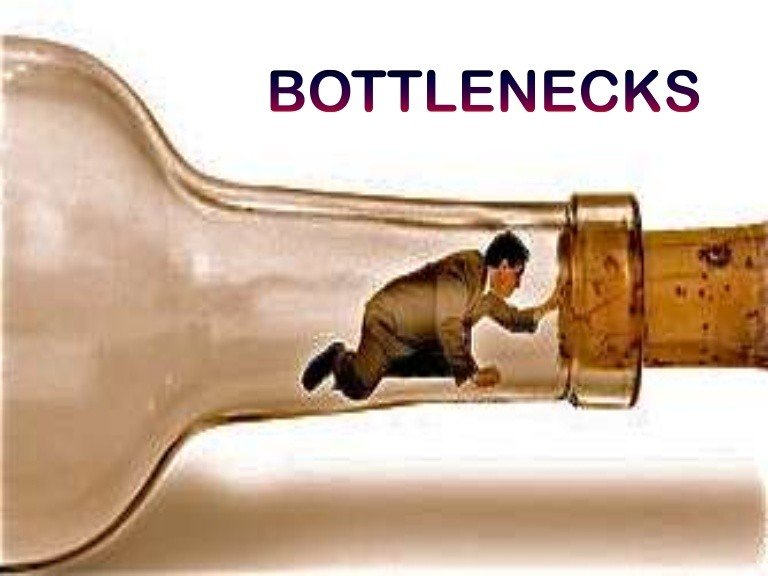How often have you twiddled your thumbs, waiting for someone to get you information or permission to proceed? I know that for me that can happen a lot and it can be super frustrating.
You could get so much done if it weren’t for other people, right?
I know it often feels that we can get more done on our own but quite simply that isn’t true. Our team members have valuable skills that we don’t have and we need them to be successful. However, when someone doesn’t deliver on time this creates roadblocks as there is work we can’t complete until someone else completes their work. You can’t paint a wall until someone builds it.
These dependencies can create bottlenecks in an otherwise seamless workflow. Unless you want to drown in frustration, you’ll want to actively clear any dependencies that slow the workflow — and you may discover that the bottleneck is as frustrated about the situation as you are.
For example, one of my client’s teams was responsible for producing several lengthy technical reports each month, but it had one overworked editor. The entire group’s productivity was limited until an assistant was hired to lift the purely administrative tasks from her plate.
So here are my best tips on how to get things rolling again when bottlenecks occur.
1. Keep lines of communication open
Make sure your team members know you depend on them. It won’t help to sit there and seethe, only to discover the other person had no idea you were waiting for them to get back to you.
2. Make your needs clear
Tell your team members precisely what you need and when. Don’t beat around the bush: Keep your communications crystal clear, with fair expectations and milestones, emphasizing accountability.
3. Get their buy-in
Once you’ve told team members what you need, get buy-in on the due date. Let them see you write it down or send an official task request. This commits them to action, making them less likely to lose track of it.
4. Offer help
Let your team members know you’re there to help if a problem arises. If someone seems stalled or repeatedly fails, point it out and ask about the pattern. There may be obstacles you’re unaware of that are preventing a timely response, or the person might need help with organization.
The above steps will force most team members into action—and some will be grateful for the help. If nothing else works, develop a workaround, put a corrective action plan in place, or hire a contractor for the task at a site like www.elance.com or www.fiverr.com. These aren’t ideal solutions, but you can’t let someone else hold you back.
Action step:
Keep track of dependencies as they arise during the course of your work. Face them head on, instead of avoiding them or falling into frustration. You can’t allow anyone to slow down the whole operation, so clear any bottlenecks as soon as they appear. In your next team meeting, discuss what slows them down.

Julia Felton (aka The Business Wrangler) is the founder of Business HorsePower. Business leaders, entrepreneurs and executives hire her to accelerate their business performance by harnessing the energy of their people to work more collaboratively together. By aligning purpose with actions the team achieves exponential results as everyone starts pulling in the same direction.
Julia believes that business is a force for good and through designing purpose-driven businesses that leverage the laws of nature, and the herd, you can create businesses founded on the principles of connection, collaboration and community that make a significant impact in the world.






